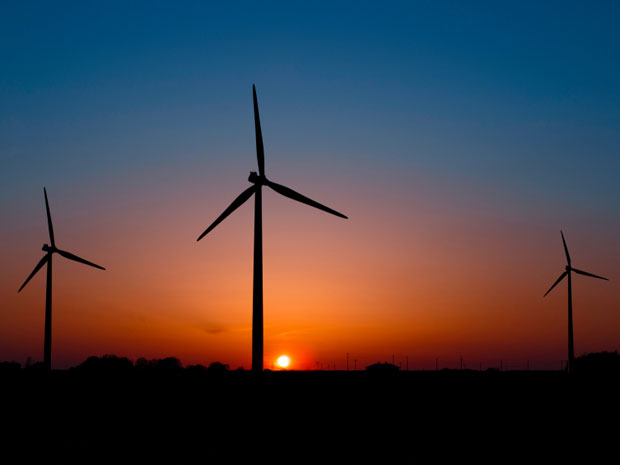 Another Very Strong Year for U.S. WindAug 9, 2013 - Bill Sweet - spectrum.ieee.org
Researchers at the Lawrence Berkeley National Laboratory (LBL) have issued their latest authoritative report on the status of U.S. wind energy. Newly installed turbine capacity increased a whopping 90 percent in 2012, driven in large part by subsidies that were expected to expire (but did not); total wind capacity climbed to 60 gigawatts, the equivalent in terms of expected energy production of roughly a quarter of installed nuclear power. Despite plummeting natural gas prices and wide switching from coal to gas generation, the expansion of wind outstripped gas last year in terms of capacity, though not in terms of expected energy production. The United States narrowly edged out China as world leader in wind capacity additions and left Germany, a one-time world market leader, in the dust. When wind is considered as a percentage of total electricity consumption, the United States still ranks only twelfth, with Denmark in first place, Germany in fifth, and the UK in eighth. But the scope for potential U.S. expansion is considerable. The United States still has no offshore wind turbines installed, an area where Denmark, Germany, and the UK have led the way. Many findings in the LBL report indicate a mature technology capable of standing on its own two feet, with predicable costs and returns. Capacity factors—the proportion of time units are generating at rated capacity—have been steady since the beginning of the century at about 30 percent; that is the most important single measure of performance and reliability. Turbine costs came down from about $1.80/watt in the late 1990s to $0.80/W in 2001-02, climbed back up to about $1.60/W a few years later, and now seem to be settling in the vicinity of $1/W. Total project costs, after dropping from more than $3/W in the 1980s to about $1.25 in 2004-05, seen to be stabilizing near $2/W. Somewhat counter-intuitively, the report found that the biggest economies of scale are registered not for example by very large farms with medium-scale turbines but by small clusters of very large turbines [photo]. Looking both back and ahead, perhaps the most important aspect of wind's impressive performance has been the standard it is setting for solar energy, which also is intermittent and therefore has similar expected capacity factors. At current solar prices, which obviously are artificially low, photovoltaic arrays are being installed at costs similar to wind's—$1/W or less per panel, $2/W or less per project. Only time will tell whether in fact solar also is crossing the boundary to market competitiveness. As of today, according to the environmental reporter for London's Financial Times, PV arrays installed without subsidies account for only a tenth of one percent of total world installations. Looking to the present and immediate future, the LBL experts expect this year to be somewhat slow for wind, as the project pipeline is rebuilt, but for solid growth to resume in 2014. Photo: Jodi Jacobson/iStockphoto |
Email this page to a friend
If you speak another language fluently and you liked this page, make
a contribution by translating
it! For additional translations check out FreeTranslation.com
(Voor vertaling van Engels tot Nederlands)
(For oversettelse fra Engelsk til Norsk)
(Для дополнительных
переводов проверяют
FreeTranslation.com )


